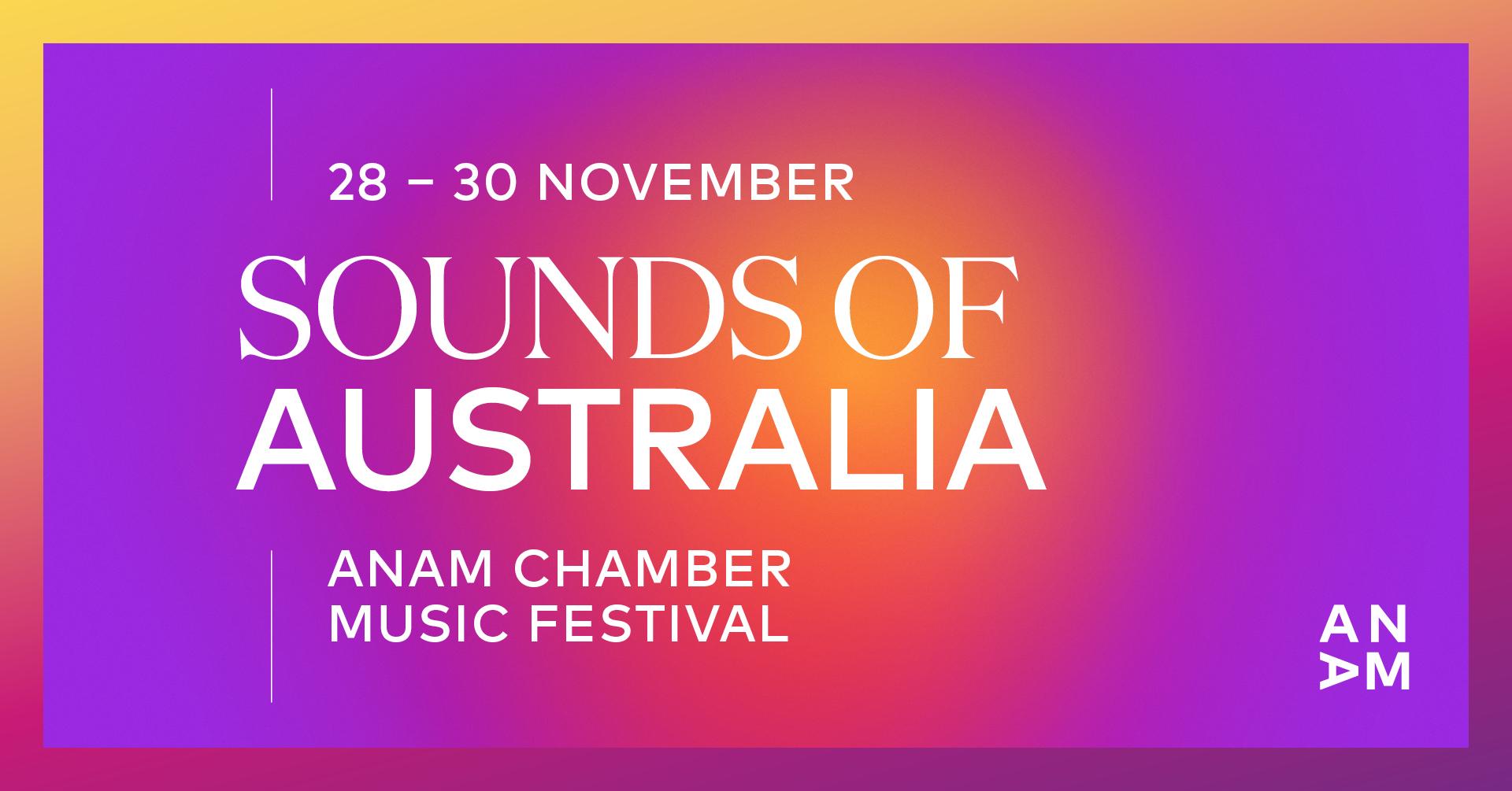Kate Tempany’s Wimmera-Mallee for Sarod, String Quartet and Double Bass as part of the Sounds of Australia festival at ANAM is a collaboration between Hindustani and Western musical traditions that brings to life Kate’s deep love for the Mallee and her enduring passion for the environment by drawing on her many years of intercultural arts practice.
Kate is a composer, tabla player and workshop artist, and is based in Melbourne. She was born in Echuca (Yorta Yorta country) and grew up in the Riverina region with close connections to and influence of her maternal grandmother. Her formative years were spent visiting the Mallee region of Victoria, which is where her grandmother and mother were born.
“The Mallee, for me, has always been something at the edges of my consciousness. It was a place of significance for my grandmother, who endured an incredible amount of hardship, as a single mother in poverty, working as a bush nurse. The beauty of the Mallee really was what kept her going.”
Kate conjures an evocative image of her grandmother and how she would often return to the Mallee, and how that very specific place shaped and gave meaning to her life. This work, to Kate, among many things, is also an exploration of what the place meant to her grandmother.
“She would stride out into the Mallee wearing her bush nurse’s uniform, taking little children in her tow to show them how beautiful the land was and what an amazing thing we were part of. It was important to her lived experience.”
Describing the emotional truth that drives the creation of this work Kate says, “it's been like a beautiful heart, like a whispered melody that's been at the back of my consciousness all this long time. And at last, I've brought some of it to consciousness, but in a sense, I feel like I've only just acquainted myself with the terrain. This is in no way a definitive statement. It is just … a bringing to light, and maybe the beginning of another trajectory.”
The ecosystems of the Mallee form a prompt and inspiration for Kate. But she is conscious of the source of the work being her connection to this landscape, more so as a non-Indigenous artist composing work on Aboriginal land.
“Any composer constructing musical meaning about landscape must reckon with the primacy of 60,000 years of First Nations artistic expression in Australia. Indigenous people have an extraordinary depth of connection to the land, which is manifested through their music and sacred song and dance.”
“And I feel like often we're struggling after a pale imitation of that. It's, such a profound connection and it's so outside of the Western experience,” she adds. Kate feels all Australian composers are deeply influenced by this at some level, whether they want to admit it, or whether they’re fully conscious of it or not, is another story.
“We all know that First Nations people, sing country, and the country, in a sense, sings itself through them. And I know that while I'm not Indigenous, the country does sing to me. For me, it's just the beginning of a process of recuperation to acknowledge that country is so important to me too. And to ask, what is this connection? And how can we possibly build a framework where we could listen to each other,” she shares.
But why Hindustani music to talk about a remote Australian landscape? This is a question she has been asked a few times. To which she responds, “so, why use European music? Any musical system of thought will be, in some sense, an imposition on the lived experience.”
She recalls the time she travelled to India for the first time in 1989, an “overwhelming, intoxicating and challenging time for a 21-year-old Australian woman,” and yet she has been able to draw similarities and parallels from her years-long training since that time.
“Maybe this is a similar metaphor like the Mallee, that for all the harshness and difficulty, it's incredibly beautiful and it's almost heart-rending. And there's a heart-rending beauty, and deep melancholy and timelessness expressed often in Indian culture and Hindustani music, which yes, you do find in Western culture, but maybe in the busyness of the 20th and 21st century, not so frequently.”
She feels Melbourne is the right place for such a collaboration, and ANAM hosting a project of this nature validates this feeling.
“ANAM is a major national institution. For ANAM to be showcasing a work with such a deep engagement with Hindustani music really marks a certain coming of age. It's acknowledging that there are so many cultural traditions in this space.
“It is an acknowledgement of the polyvalency or the plural vocality of the Australian experience that there are many voices here and that we need to be very careful not to superimpose one mainframe view over such complex and unfolding diversity.
“Rather, let's give expression to that process of unfolding so it's not just a smorgasbord of different cultures that we're going to have a little taste of, but rather initiate a dialog between these disparate cultural systems, like I along with the musicians are attempting through Wimmera-Mallee with the Hindustani system and the Western classical system,” she adds.
Sounds of Australia runs at ANAM from 28 – 30 Nov. Kate’s work will be performed in the 7pm Sacred Sky concert on the last day of the festival on 30 November.
Words by Jasmeet Kaur Sahi, in conversation with Kate Tempany
ANAM CHAMBER MUSIC FESTIVAL: SOUNDS OF AUSTRALIA
Thu 28 Nov 7pm
Fri 29 Nov 7pm
Sat 30 Nov 3pm
Sat 30 Nov 7pm
Venue Rosina Auditorium, Abbotsford Convent
Tickets from $20
Bookings anam.com.au or 03 9645 7911

